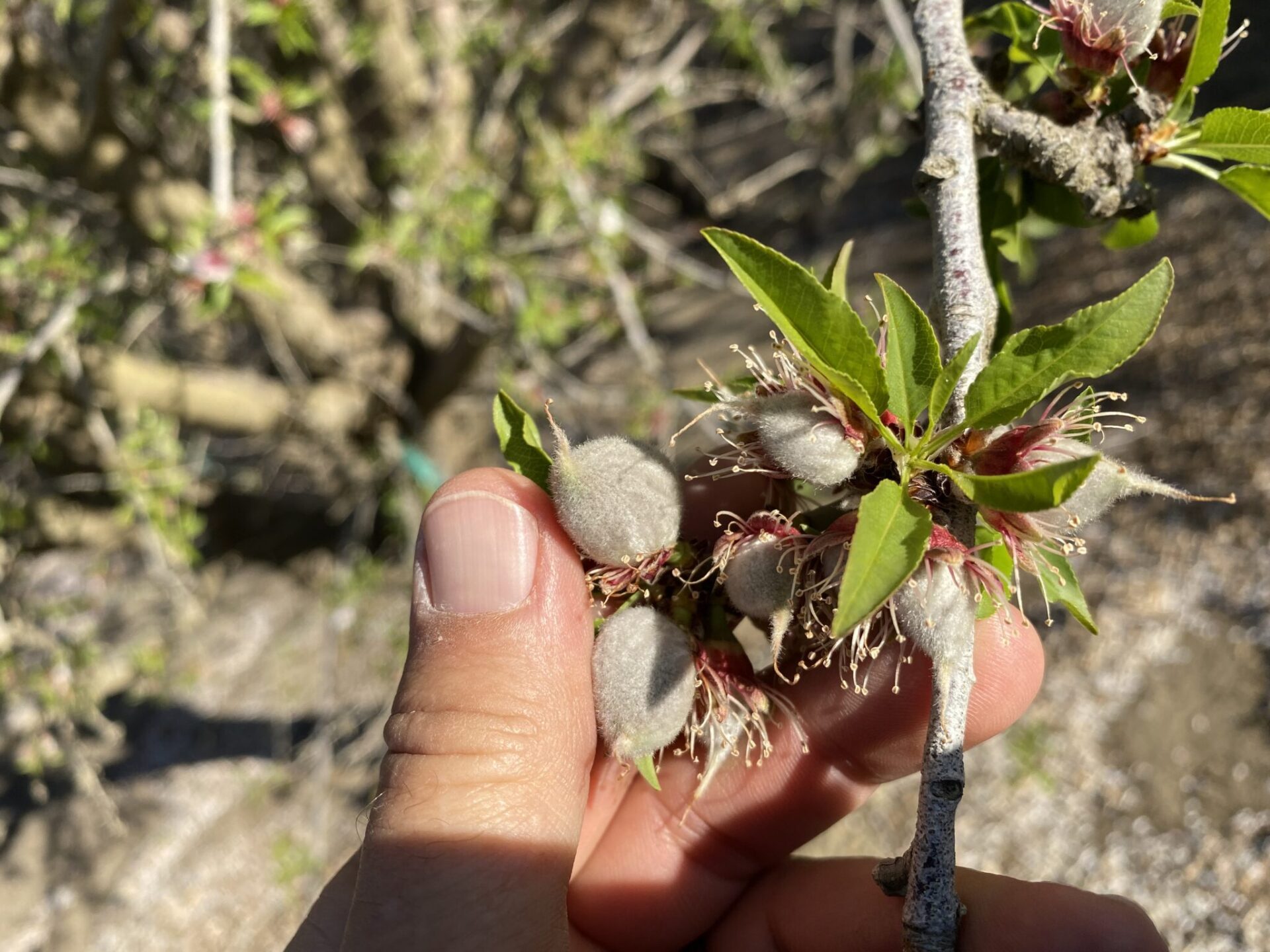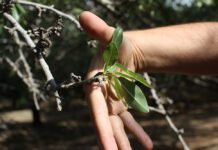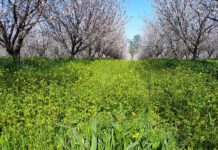
The perfect storm seems to be rolling into the agricultural mainland. Walnut and almond prices are down, inputs are going up with the petroleum and shipping debacles, water is off the charts (if you can get it) in many districts, and last year’s bumper crops will most likely lead to smaller yields this year. Farmers don’t back away from challenges. In most cases, we pull our hats down a little tighter and get ready for the ride ahead. Well, saddle up buckaroos, this ride is going to get wild!
Many of my growers’ original concerns with me, specifically as a crop advisor that sells a particular brand of nutrients, revolves around how I am going to help them save money. That concern gets more intense with those of us that peddle less salty and more efficacious nutrients as they tend to cost more. The first conversations this year typically focused on cutting the budget by a specific percentage at each event and planning the season that way. It would most likely make sense by giving the plants a little something at each fertigation or spray and attempting to mitigate the reductions in nutrients and deficit while holding on to profit. Those conversations then turned to a different perspective as I pleaded with my clients to ride that horse on a different saddle.
Growing nut crops has its specific growth and agronomic stages. Shorting them specific nutrients at those stages can be detrimental to optimizing yields. My argument is for not reducing most of your nutrient budget up front.
I recently produced a few short videos showing the significant development of almonds in a very short time (seven to 10 days.) I pulled many of last year’s smaller nuts (stick tights) off branches of some fields I just started consulting for this spring. The new, recently pollinated trees were sizing so significantly in the first week of their development that they were already 30% the size of last year’s smaller nuts. The warm and extended bloom produced an abundance of ‘pollinated nuts’ in most varieties of almonds and, hopefully, will do the same for pistachios and walnuts. If the crop is decent again upfront, those trees are going to need adequate yet specific nutrients to size, develop and avoid being shed.
Cut N but Not P and Ca
Of all the necessary nutrients to cut, if you’re going to do that, it is my recommendation to only reduce your nitrogen budget early. Focus on energy, cell division, cell elongation and nutrient movement with the other big boys, P and Ca. I don’t have many growers that ever skimp on nitrogen. It’s the cheapest nutrient and at the top of the list for crop need. Most, if not all of them, are above adequate levels every July. However, much of that early need is satisfied by what was stored in the roots last fall. Many growers start applying too early and too heavy.
In speaking with other consultants, it is becoming more and more apparent that heavy early N applications may be adding to the early nut shed. It’s not a June drop anymore, but more of a late April/early May drop. Nitrogen pushes a tree to promote more vegetative growth as opposed to a tree making babies. Rank vegetative growth can also increase pest pressure and disease. Nitrate is like a fuel additive early compared to ammoniacal or urea forms of N. It works well with Ca as a synergistic nutrient for cell division and can probably be applied in smaller, more frequent doses. Couple that with alternating shots of P (ortho of course) and micronutrients; you not only add proper nutrition but deliver the energy needed to fuel enzymatic reactions as well. As you know, P is critical to creating ATP (energy), and calcium builds cell walls and plant strength. However, they can’t go together in adequate amounts without creating plaster. When you read this article, it will be time to pull your leaves to sample for early levels of N. If you are above adequate (most will be), reduce that N budget and save a few bucks!
Let’s take this a step further. Ca will wedge the ground open and allow for soil flocculation and water penetration. That is why gypsum works well getting water down. The reason it keeps on working is that wall board is very stable and resists breaking down. That is not feeding a plant Ca. Do that with soluble Ca in addition to your gypsum applications. As you open that ground, you create the ability to leach soluble nutrients below the root zone. K, B and Na will do just that: go down like a young cowboy on a rank bull. Especially with long irrigation sets. And the point? Fertigate like it’s an 8-second ride. This isn’t a pack trip; it needs to be quick. If you typically irrigate for 24 hours in a week, break that into three eight-hour sets. Fertigate for 8 hours in the middle set and keep more of that nutrition in the root zone.
This will do four things in-season to save you money: With more nutrition effectively getting into your trees, you can probably cut back a bit on total inputs in season. Wetting and drying the root zone quicker will create more functional aerobic conditions quicker and keep the roots from sitting in water for too long. It also typically keeps deep moisture from subbing up on those longer dry intervals. If you can fertigate from 7 p.m. to 7 a.m., you’ll save a significant amount of money on utility costs as well. Running water at night is much more effective at getting all that precious gold into the earth and not the air. We lose a significant amount of water during the day with our 100-degree F temps. Keep it where it needs to be.
As you take the reins this season, give your trees what they need upfront in short, focused amounts. Start the season with all the adequate nutrition you need through April to divide cells and develop those strong solar panels. Think about cutting back after your April 15 tissue tests are analyzed. The structured, strong leaf expansion without rank growth should also save you money on crop protection products. Weak trees attract bugs. Over-applying one or two nutrients can do that. We have to be lean and mean in years like this and change the way we have typically done things. When the day is done, we may find we have a new favorite horse to ride.















